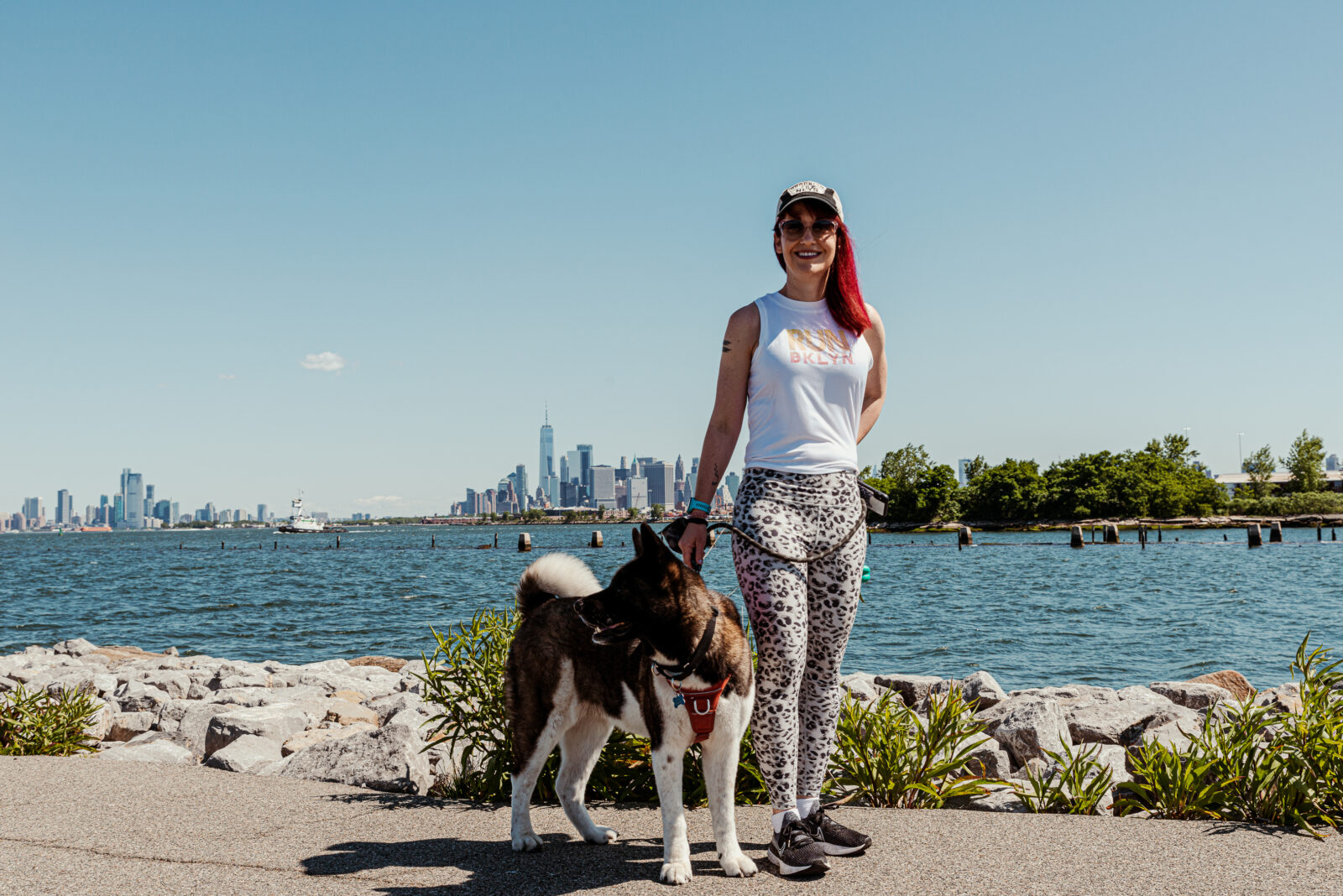By Marnie Kunz
Dogs can be some of the best running partners – they are always happy to run, never complain and love to explore outside. If your dog is a little bossy like mine, they may even motivate you to run by nudging you out the door at the same time every day. But it’s not always easy to train your dog to run – some pick it up more easily than others. There are also safety issues that can arise, so it helps to be prepared. These tips will help you run with your dog safely and happily.
- Make sure your dog is healthy to run. As with people, dogs can sometimes have medical issues that can hinder running. Ask your vet if your dog is cleared to begin a running program. Your vet may also have specific tips for your dog – such as limiting your dog’s miles or avoiding especially hot weather if you have a snow dog. (My furry Akita, for instance, can run from about September to May without getting too hot, and has to chill out by the A/C most of the summer).
- Build up gradually. Most dogs are natural runners and will enthusiastically join you in running, but they can push themselves too far in order to please you. Just like we have to build up our endurance, dogs have to build theirs up as well. If your dog has been pretty sedentary till now, ease into a running program by working up to a mile to start.
- Watch the weather. Dogs overheat more quickly than us since they cannot release heat through sweat. Temperatures between 15 and 60°F are best for most dogs to run in. Some breeds may be more tolerant to the heat, depending on their breed. I wouldn’t take my big, furry Akita for a run in 80-degree weather for instance, but she is happy to run when it is 12 degrees outside while other dogs have on coats. And a Rhodesian Ridgeback, on the other hand, which hails from South Africa, will be better equipped to handle summer running than a furry, Nordic breed like a Siberian husky. That said, do not run with any dog in the hottest part of the day with direct sunlight beaming down in the summer. This will make ground surfaces and air too hot. A good general rule of thumb is if the heat and humidity add up to 150 or more, it is too hot for your dog to run.
- Train your dog to run on one side. This one may be easier said than done but some basic obedience will help. If you have been to obedience training with your dog, use your walking command and have your dog stay on the side you have them trained to walk on. Increase your pace to a run and have your dog stay on that side. Praise them throughout the run for staying beside you. If you have not been to obedience training, first train your dog to walk on one side with you before you progress to running. Use treats for a reward if needed.
- Practice “leave it!” The “leave it!” command is useful for running in case your dog is tempted to veer off course by a distraction such as a piece of food on the ground, or another dog. “Leave it!” means to leave the thing along and stay on course. This is something you can practice on your walks and at home to reinforce. When your dog follows the leave it command in training, reward them with a treat and praise.
- Be aware of running surfaces. Since we run with shoes, it is easy to forget about the surface we run on, but for dogs they are reliant on just their paw pads. Avoid hot concrete and asphalt surfaces and run on softer, natural ground like trails as much as possible with your pooch. Also watch out for broken glass or other hazards that could hurt your dog’s paws.
- Watch for signs of fatigue. Since our dogs can’t tell us when they’re tired, we need to watch for the signs. If your dog drools excessively, pants heavily, drags behind you or stops, these are signs your dog needs to rest. I know it can be frustrating if you want to get in more running miles, but you do not want to risk your dog’s health or well-being. If your pooch is happier running less miles than you, consider doing your warm-ups or easy run days with your dog. My akita is happy to run two or three miles with me, for instance, so I do recovery runs and shorter base runs with her. When I want to do longer runs or speed workouts, I go on my own. I have a friend who has run up to 13 miles with her pitbull with no problem. Every dog and breed is different, so be alert to your dog’s needs and you’ll find a happy running distance you can both enjoy.
- Enjoy the run. Remember that running with your dog is supposed to be fun, so keep it fun and positive for your pooch. Praise your dog during and after your run, and your dog will soon be nudging you out the door to run again.
Marnie Kunz is a NASM-certified personal trainer, USATF and RRCA-certified running coach and the creator of Runstreet Art Runs & Training. She is a Brooklyn resident and Akita mom. She enjoys sweating, traveling, art, and eating messily. You can follow her at @Runstreet Instagram.

